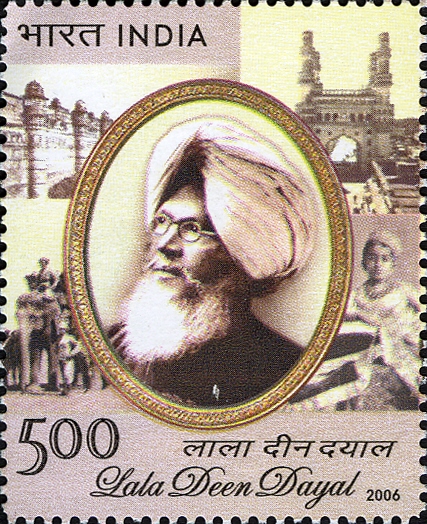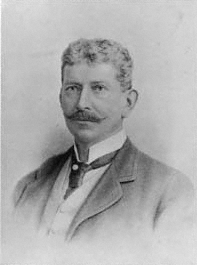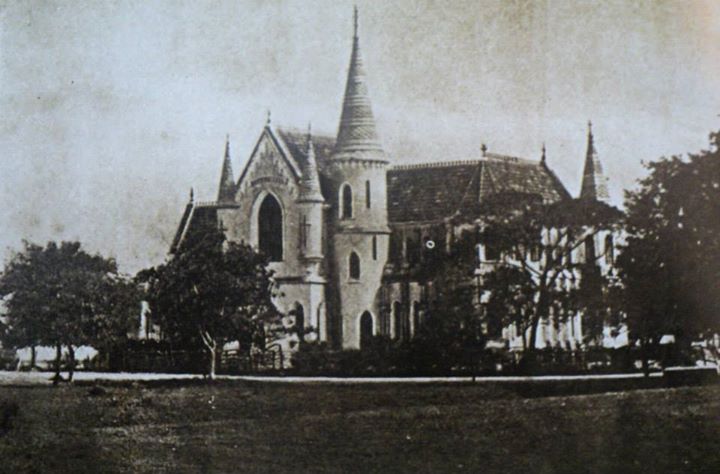|
Lala Deen Dayal
Raja Lala Deen Dayal (; 1844–1905; also written as 'Din Dyal' and 'Diyal' in his early years), famously known as Raja Deen Dayal) was an Indian photographer. His career began in the mid-1870s as a commissioned photographer; eventually he set up studios in Indore, Mumbai and Hyderabad. He became the court photographer to the sixth Nizam of Hyderabad, Mahbub Ali Khan, Asif Jah VI, who awarded him the title Raja Bahadur Musavvir Jung Bahadur, and he was appointed as the photographer to the Viceroy of India in 1885. He received the Royal Warrant from Queen Victoria in 1897. Early life and education Deen Dayal was born in Sardhana, Uttar Pradesh, near Meerut in a family of jewellers. He received technical training at Thomason College of Civil Engineering at Roorkee (now IIT Roorkee) in 1866 as an engineer in lower subordinate class. Career In 1866, Deen Dayal entered government service as head estimator and draughtsman in the Department of Works Secretariat Office in In ... [...More Info...] [...Related Items...] OR: [Wikipedia] [Google] [Baidu] |
Sardhana
Sardhana is a city and a municipal board in Meerut district in the Indian state of Uttar Pradesh. It is northeast of New Delhi and 13 mi from Meerut. It is 5 km from Meerut Karnal National Highway and 12 km from National Highway 58. It is famous for its cloth and timber industries, and its church. History Being close to Hastinapur, which is also in Meerut district, the capital of Kauravas of Mahabharata, Sardhana is also known for the ancient Mahadev Temple that is believed to be dating from the Mahabharata period. It was here that the Pandavas prayed before leaving for the Lakshagrah, the notorious palace made of lac by Duryodhana, at the confluence of the Hindon and Krishna rivers (Kali River, ''Kali Nadi''). This palace was located at ''Varnavrat'', the present Barnava, where the prince resided with their mother Kunti. In the 19th century, Sardhana was the capital of the Begum Samru, born as Farzana Zebunisa in 1751, and considered to be the only Catholic ... [...More Info...] [...Related Items...] OR: [Wikipedia] [Google] [Baidu] |
Meerut
Meerut (, IAST: ''Meraṭh'') is a city in Meerut district of the western part of the Indian state of Uttar Pradesh. The city lies northeast of the national capital New Delhi, within the National Capital Region and west of the state capital Lucknow. , Meerut is the 33rd most populous urban agglomeration and the 26th most populous city in India. It ranked 292nd in 2006 and is projected to rank 242nd in 2020 in the list of largest cities and urban areas in the world. The municipal area (as of 2016) is . The city is one of the largest producers of sports goods, and the largest producer of musical instruments in India. The city is also an education hub in western Uttar Pradesh, and is also known as the "Sports City Of India". The city is famous for being the starting point of the 1857 rebellion against Company rule in India. Origin of the name The city may have derived its name from 'Mayarashtra' (Sanskrit: मयराष्ट्र), the capital of the kingdom of Mayasu ... [...More Info...] [...Related Items...] OR: [Wikipedia] [Google] [Baidu] |
Bundelkhand
Bundelkhand (, ) is a geographical and cultural region and a proposed state and also a mountain range in central & North India. The hilly region is now divided between the states of Uttar Pradesh and Madhya Pradesh, with the larger portion lying in the latter state. Jhansi is the largest city in Bundelkhand. Another major city of Bundelkhand is Sagar being second largest city of Bundelkhand and headquarter of Sagar Division. Etymology Bundelkhand means " Bundela domain". The region was earlier known as Jejabhukti or Jejakabhukti ("Jeja's province"). According to the inscriptions of the Chandela dynasty, this name derived from Jeja, the nickname of their ruler Jayashakti. However, it is possible that the name derives from an even earlier name of the region: "Jajhauti" or "Jijhoti". After the Bundelas replaced the Chandelas around 14th century, the region came to be known as Bundelkhand after them. History Under the British Raj, Bundelkhand included the princely states of ... [...More Info...] [...Related Items...] OR: [Wikipedia] [Google] [Baidu] |
Sir Lepel Griffin
Sir Lepel Henry Griffin, (20 July 1838 – 9 March 1908) was a British administrator and diplomat during the British Raj period in India. He was also a writer. Early life Lepel Henry Griffin was born in Watford, England on 20 July 1838. His father, Henry, was a clergyman in the Church of England and his mother was Frances Sophia. His mother had been married previously and thus Griffin had ten half-siblings as well as two full sisters. Griffin was educated briefly at Harrow School, having also attended Malden's Preparatory School, Brighton. He did not go to university but was privately tutored for the competitive examination for entry to the Indian Civil Service. He sat and passed those examinations during 1859 and 1860, being ranked tenth among the 32 successful candidates. Career He reached India in November 1860 and was posted to Lahore. The mannerisms of Griffin had attracted attention in India from the time of his arrival there, and in 1875 Sir Henry Cunningham ... [...More Info...] [...Related Items...] OR: [Wikipedia] [Google] [Baidu] |
Alexandra Of Denmark
Alexandra of Denmark (Alexandra Caroline Marie Charlotte Louise Julia; 1 December 1844 – 20 November 1925) was Queen of the United Kingdom and the British Dominions, and Empress of India, from 22 January 1901 to 6 May 1910 as the wife of King-Emperor Edward VII. Alexandra's family had been relatively obscure until 1852, when her father, Prince Christian of Schleswig-Holstein-Sonderburg-Glücksburg, was chosen with the consent of the major European powers to succeed his second cousin Frederick VII as king of Denmark. At the age of sixteen Alexandra was chosen as the future wife of Albert Edward, Prince of Wales, the son and heir apparent of Queen Victoria. The couple married eighteen months later in 1863, the year in which her father became king of Denmark as Christian IX and her brother was appointed king of Greece as George I. Alexandra was Princess of Wales from 1863 to 1901, the longest anyone has ever held that title, and became generally popular; her style of dres ... [...More Info...] [...Related Items...] OR: [Wikipedia] [Google] [Baidu] |
Edward VII Of The United Kingdom
Edward VII (Albert Edward; 9 November 1841 – 6 May 1910) was King of the United Kingdom of Great Britain and Ireland and Emperor of India, from 22 January 1901 until his death in 1910. The second child and eldest son of Queen Victoria and Prince Albert of Saxe-Coburg and Gotha, and nicknamed "Bertie", Edward was related to royalty throughout Europe. He was Prince of Wales and heir apparent to the British throne for almost 60 years. During the long reign of his mother, he was largely excluded from political influence and came to personify the fashionable, leisured elite. He travelled throughout Britain performing ceremonial public duties and represented Britain on visits abroad. His tours of North America in 1860 and of the Indian subcontinent in 1875 proved popular successes, but despite public approval, his reputation as a playboy prince soured his relationship with his mother. As king, Edward played a role in the modernisation of the British Home Fleet and the reorgan ... [...More Info...] [...Related Items...] OR: [Wikipedia] [Google] [Baidu] |
Daly College
The Daly College is a co-educational residential and day boarding school located in Indore, Madhya Pradesh, India. It was founded by Sir Henry Daly of the British Indian Army during India's colonial British Raj, following an English public school model . The school started in 1870 as the Residency School. It was then renamed as the East Rajkumar College in 1876, and in 1882, it came to be known as The Daly College. It was established by the Resident Governor of the erstwhile Presidency, to educate the children of the royalty, nobility and aristocracy of Central Indian Princely States of the 'Marathas', 'Rajputs', Jats’, 'Mohameddans' and 'Bundelas'. It is one of the oldest co-educational boarding schools in the world. the school has more than 2,000 students. It is ranked 1st in India by Educationworld India for the year 2015 in the category day-cum-boarding schools. Daly College is affiliated to the Central Board of Secondary Education (CBSE) and CIE. In 2007, the first Int ... [...More Info...] [...Related Items...] OR: [Wikipedia] [Google] [Baidu] |
Central India
Central India is a loosely defined geographical region of India. There is no clear official definition and various ones may be used. One common definition consists of the states of Chhattisgarh and Madhya Pradesh, which are included in almost all definitions. Like some other definitions this takes the part of northern India that is "central" on an east-west axis. Thus the Central Zonal Council set up by the Indian government includes both these states, plus Uttar Pradesh and Uttarakhand to the north, the last taking the region to the border with Tibet/China in the Himalayas. Another approach, historically more usual, is to base "Central India" on a north-south axis, making it the part of India that is south of North India and north of South India; the definition of North India also varies hugely, but that of South India is generally agreed. This definition includes either some or all of the Deccan, in particular Maharashtra, and may or may not include some of the I ... [...More Info...] [...Related Items...] OR: [Wikipedia] [Google] [Baidu] |
Governor-General Of India
The Governor-General of India (1773–1950, from 1858 to 1947 the Viceroy and Governor-General of India, commonly shortened to Viceroy of India) was the representative of the monarch of the United Kingdom and after Indian independence in 1947, the representative of the British monarch. The office was created in 1773, with the title of Governor-General of the Presidency of Fort William. The officer had direct control only over Fort William but supervised other East India Company officials in India. Complete authority over all of British territory in the Indian subcontinent was granted in 1833, and the official came to be known as the "Governor-General of India". In 1858, because of the Indian Rebellion the previous year, the territories and assets of the East India Company came under the direct control of the British Crown; as a consequence, the Company rule in India was succeeded by the British Raj. The governor-general (now also the Viceroy) headed the central government ... [...More Info...] [...Related Items...] OR: [Wikipedia] [Google] [Baidu] |
Henry Daly
General Sir Henry Dermot Daly (25 October 1823 – 21 July 1895) was a senior British Indian Army officer, colonial administrator, Liberal Unionist politician and founder of Daly College. Biography Daly was the son of Lieutenant-Colonel Francis Dermot Daly, an officer in the 4th Light Dragoons, and his wife, Mary McIntosh. He joined the Bombay Infantry as an officer cadet in 1840. Along with several similarly aged young officers, such as Herbert Edwardes and Patrick Alexander Vans Agnew, Daly was sent to "advise" the Sikhs as part of Henry Lawrence's "Young Men". He served in the Second Anglo-Sikh War and was present at the Siege of Multan. On 18 May 1849, he raised the 1st Punjab Irregular Cavalry, which subsequently became the 21st Prince Albert Victor's Own Cavalry (Frontier Force) (Daly's Horse). Daly was promoted to the rank of captain in 1854 and led his regiment during the Indian Mutiny. The regiment operated in North India and took part in the Siege of Delhi and the R ... [...More Info...] [...Related Items...] OR: [Wikipedia] [Google] [Baidu] |
Holkar
The Holkar (Pronunciation: �o(ː)ɭkəɾ dynasty was a Maratha clan of Dhangar origin in India. The Holkars were generals under Peshwa Baji Rao I, and later became Maharajas of Indore in Central India as an independent member of the Maratha Empire until 1818. Later, their kingdom became a princely state under the protectorate of British India. The dynasty was founded with Malhar Rao, who joined the service of the Peshwas of the Maratha Empire in 1721, and quickly rose to the rank of Subedar. The name of the dynasty was associated with the title of the ruler, who was known informally as ''Holkar Maharaja''. Establishment of Holkar rule Malhar Rao Holkar (1694–1766), a Maratha chief serving Peshwa Baji Rao, established the dynasty's rule over Indore. In the 1720s, he led Maratha armies in Malwa region, and in 1733 was granted 9 parghanas in the vicinity of Indore by the Peshwa. The township of Indore had already existed as an independent principality e ... [...More Info...] [...Related Items...] OR: [Wikipedia] [Google] [Baidu] |
Tukojirao Holkar II
Maharajadhiraj Raj Rajeshwar Sawai Shri Sir Tukoji Rao II Holkar XI Bahadur (3 May 1835 – 17 June 1886) was the Maharaja of Indore (Holkar State) belonging to the Holkar dynasty of the Marathas. His birth name was Shrimant Yukaji Jaswant Holkar. He was the son of Raja Shrimant Santoji Rao Holkar, from the collateral branch of the Holkar dynasty. Biography On the death of Khande Rao Holkar II in 1844 former Maharaja Marthand Rao Holkar claimed the throne for himself, but his request, backed by many nobles, was not given by the British. Krishna Bai Holkar Sahiba, one of the widows of Yashwant Rao Holkar, suggested the name of the younger son of Bhao Santoji Holkar (uncle of Marthand Rao). The proposal was accepted and the 12-year-old Jaswant Holkar was installed with the regnal name of Tukoji Rao Holkar II on 23 June 1844. The regency council, controlled by the resident continued. At the age of 16, in 1848, Tukoji Rao II began participating in the government formally. K ... [...More Info...] [...Related Items...] OR: [Wikipedia] [Google] [Baidu] |




.jpg)

